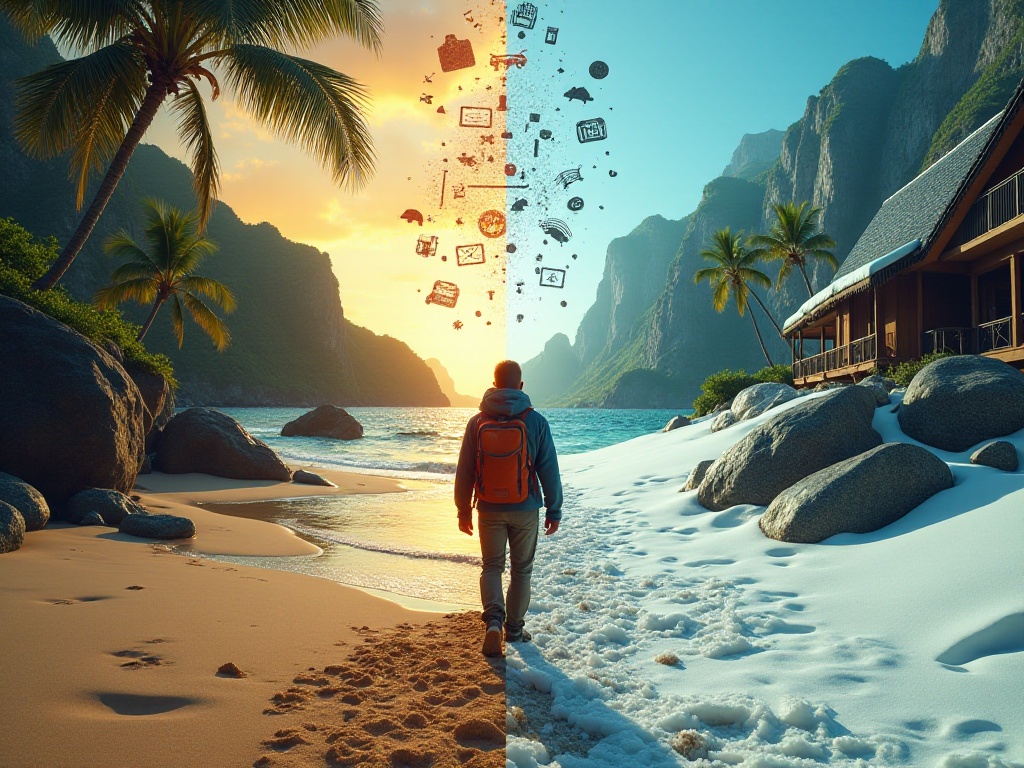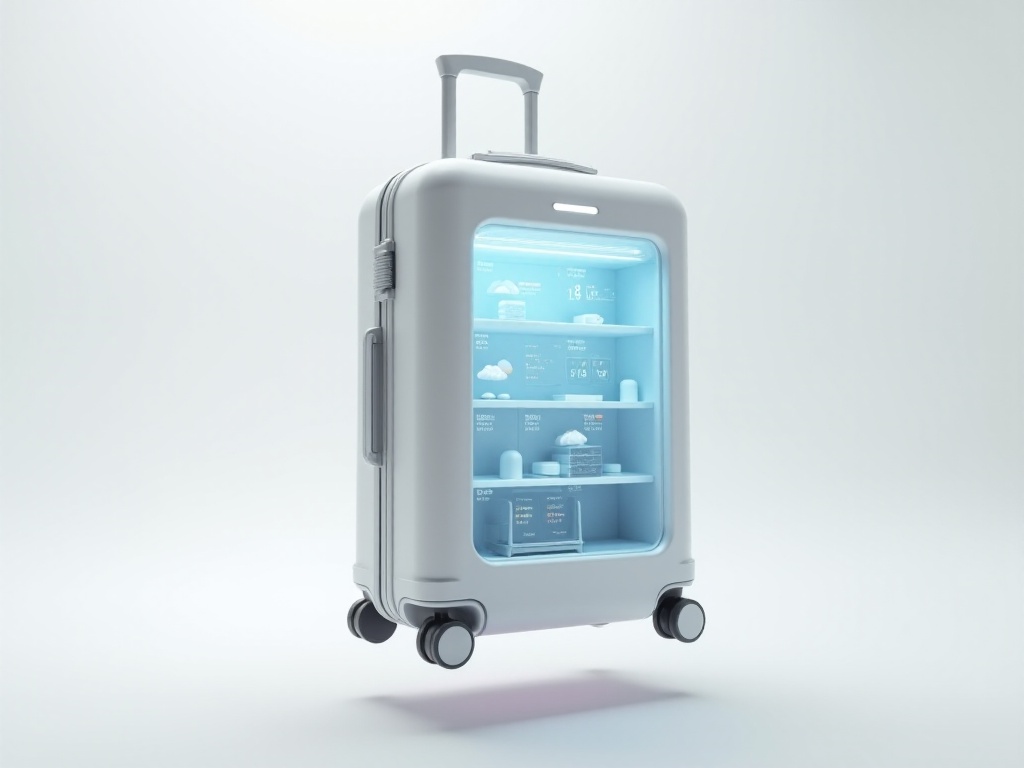Pre-trip Preparation
Last winter, while scrolling through my phone, I saw a photo of Hokkaido's snow scenery - a white world accompanied by wisps of hot spring steam, which instantly captivated me. On impulse, I immediately decided: I must go to Hokkaido to see the snow! Although spontaneous travel sounds cool and romantic, it still requires quite a bit of homework in practice. After this spontaneous travel experience, I discovered several god-tier travel planning tools that are absolute blessings for travelers, and today I'm going to share these recommendations with you.
The most impressive app was TripIt. It's like a thoughtful personal assistant that automatically organizes your itinerary. For example, when I booked a flight from Haneda Airport to Sapporo's New Chitose Airport on the JAL website, and then booked the Tokyu REI Hotel near the airport on Booking, I just had to forward the confirmation emails to TripIt, and it would automatically recognize the information and generate a complete itinerary. The best part is that this itinerary can be viewed offline, so you don't have to worry about not being able to find your hotel address when there's no internet connection at your destination.
Pre-departure Preparation
Speaking of packing, I used to either pack too much or too little, but PackPoint opened up a whole new world for me. This app is super smart - I just need to input simple information like "5 days in Sapporo, want to go skiing," and it generates a super detailed packing list based on the destination's weather conditions and my itinerary. From basic items like thermal underwear, sweaters, and down jackets, to skiing equipment like ski gloves and goggles, and even easily forgotten items like hand warmers and lip balm (Hokkaido winters are terribly dry), everything is listed clearly.
Regarding language preparation, although there are various translation software available, knowing some Japanese still provides more peace of mind. I used Drops to learn Japanese for a month, and this app makes language learning particularly fun, like playing a game. Spending ten minutes daily learning simple daily expressions. For example, "これをください" (I want this) when buying things at convenience stores, "おいしい" (delicious) when ordering at restaurants, and "〜はどこですか" (where is...) when asking for directions when lost - these basic communications really helped a lot. The pronunciation correction feature is especially good, preventing me from speaking particularly strange Japanese.

Booking Tickets and Accommodation
Booking flights is definitely an art. I tracked flight prices on Hopper for an entire month and discovered some interesting patterns. For example, flights from Tokyo to Sapporo would have a wave of low prices about three weeks before departure, and Tuesday and Wednesday flights were generally cheaper than weekend ones. This app analyzes historical price data to give "buy now" or "wait" recommendations and predicts future price trends. I finally scored a special price ticket on a Tuesday morning - round trip was only 12,000 yen, which was an absolute steal.
For accommodation, I adopted a mixed strategy. For three days in Sapporo city, I booked a business hotel UNIZO through Booking.com, just 3 minutes' walk from the subway station. Although the room wasn't big, it had complete facilities, and most importantly, the location was great - there was a convenience store downstairs, and you could walk to Tanukikoji Shopping Street. In Otaru, I found a lovely traditional Japanese guesthouse on Airbnb. The host was a particularly warm-hearted aunty who not only turned on the heating for us in advance but also prepared homemade miso soup and snacks. Soaking in the warm bathtub at night while looking at the snow scene outside was absolutely delightful.

Local Experience
In an unfamiliar city, a reliable navigation app is absolutely top priority. Google Maps is practically magical in Japan - it not only provides accurate navigation but also queries real-time public transportation information. For example, when I wanted to go from Sapporo Station to the Shiroi Koibito Factory, it would tell me which train to take, when it arrives, and even which platform to board from. Best of all, it displays fare information, allowing me to prepare exact change in advance. Its offline map function is particularly useful - I downloaded all the maps of the Sapporo city area in advance, saving me from worrying about not having internet access.
Food exploration can be said to be the most important part of travel. TripAdvisor helped me greatly in this aspect. By filtering local and tourist reviews, I discovered many hidden food gems in Sapporo's alleys. For example, a ramen shop called "えびそば一幻" in the Susukino area - their shrimp soup ramen is absolutely heavenly, with a rich but not greasy broth and perfectly chewy noodles. Most amazingly, although this shop serves great food, there's basically no need to queue - it's completely an affordable and authentic good restaurant.

Useful Tools
The most headache-inducing aspect of international travel is the internet issue. This time I tried OHAYU eSIM, which turned out to be a real money-saver. A week's internet package in Japan cost only 12 RMB, with sufficient data and stable signal. Most importantly, installation was particularly convenient - just scan the QR code to activate and use, without having to find a store to exchange physical cards. With internet access, you can check maps, use WeChat, and browse Instagram anytime, anywhere, directly upgrading the travel experience.
Although you definitely need to eat Genghis Khan BBQ and seafood in Hokkaido, too much greasy food can become overwhelming. This is where Happy Cow comes in handy. Through this app, I found several well-reviewed vegetarian restaurants in Sapporo. For example, a restaurant called "Itadakizen" near Odori Park - their vegetable tempura and matcha desserts are very refined, allowing me to balance out all the heavy eating.

Experience Summary
Through this Hokkaido trip, I deeply felt that technology has indeed made travel easier and more interesting. However, tools are just tools - the most important thing is to maintain an open and curious heart. Don't be constrained by your phone screen; when it's time to look at the scenery along the way, look at it, and when it's time to chat with locals, chat with them. Sometimes the best travel memories often come from those little surprises outside of the plan.
If I were to recommend the most worth downloading tools, I would say without hesitation that they are TripIt and Google Maps. TripIt makes itinerary planning easy and enjoyable, while Google Maps ensures you won't get lost in a foreign land. Of course, everyone's travel habits and needs are different, and I hope through my sharing, I can help everyone find the travel tools that suit them best.
Speaking of which, are you also planning to travel to Japan? Or do you have any particularly useful travel apps to recommend? Feel free to leave comments and share your travel experiences. After all, travel is always full of new possibilities, worth discussing and improving together.
On my last day in Hokkaido, standing by the Otaru Canal, watching the falling snow, I suddenly felt that the most beautiful thing about travel is that it allows us to discover new scenery, meet different people, and experience different lives in unfamiliar lands. And these technology tools make it all simpler and more beautiful.


